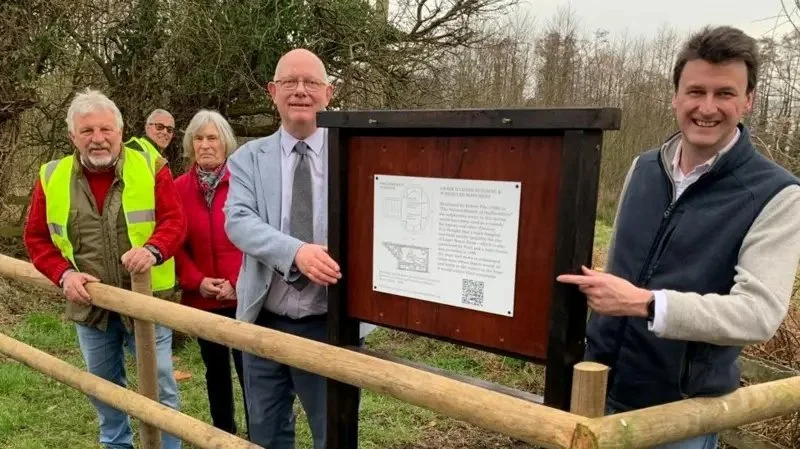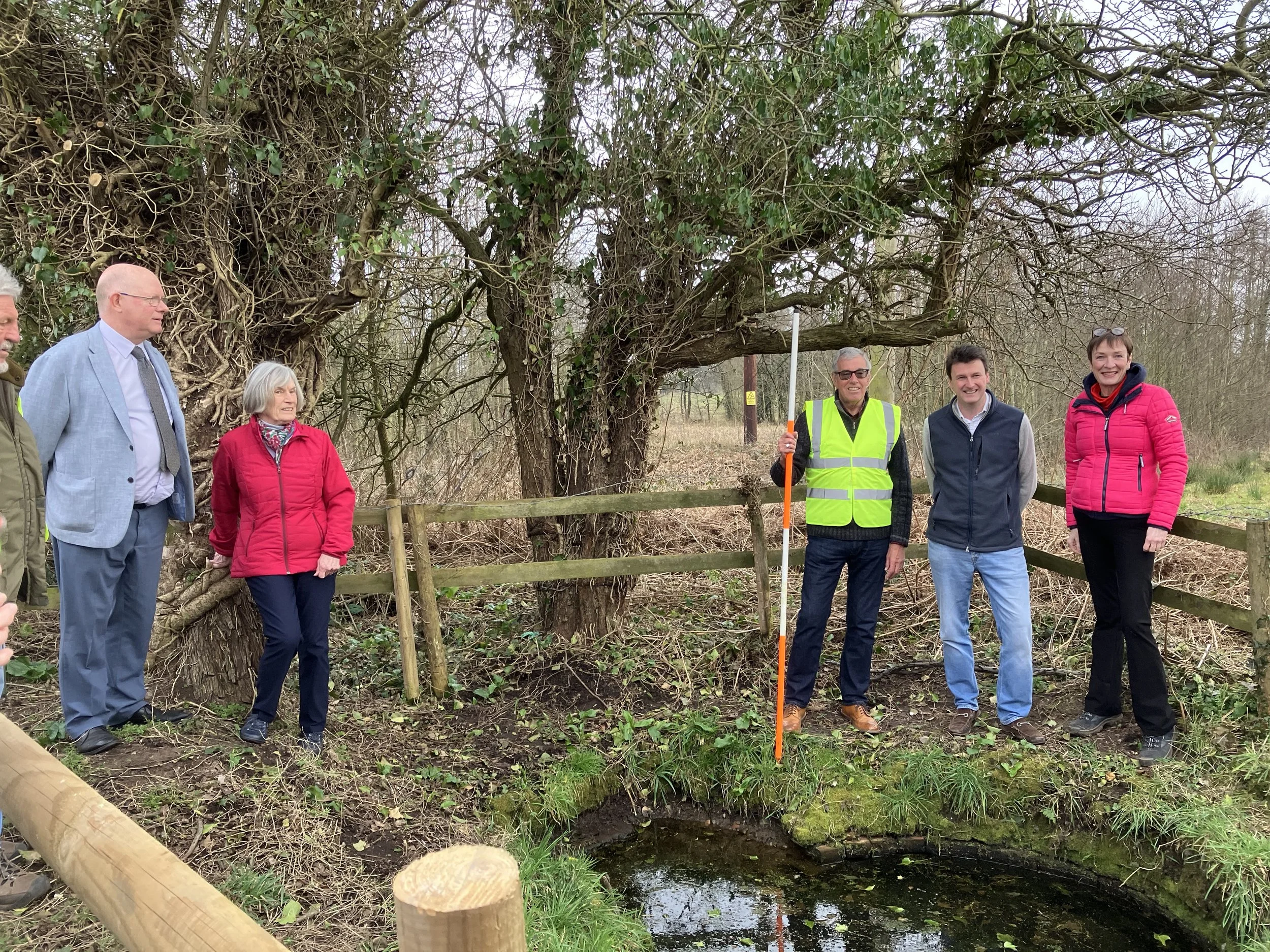Restoring a piece of local history - the Leper Well
A plaque is unveiled to mark the restoration of the Leper Well. From left: Mike Blackshaw, David Burton-Pye, Kathy Knight, Staffordshire councillor Mark Sutton and Charlie Giffard.
The overgrown Leper Well at Gunstone between Codsall and Brewood has been hidden from view for decades - now it’s visible once again with an official plaque marking the spot.
From as far back as the early Middle Ages, a well was dug at Gunstone, between Codsall and Brewood, and its water was sulphurous and believed to be medicinal.
Tradition has it that local people suffering from leprosy would be blessed by the priest at Codsall church and then make their way down the hill, across Moatbrook, to bathe in its therapeutic waters.
Steps led down to the brick-built, oval well and it is thought that lepers, possibly staying at a nearby property called Leper House Farm, would use it as a bath hoping that it would improve their health.
The Leper Well is an important part of the area’s rich history yet for many years, it lay almost unnoticed, covered over by grass, bracken, ivy and weeds. But now, it is visible again with a plaque unveiled alongside it to commemorate its restoration and give walkers an insight into its past.
The unveiling of the plaque on March 6th, 2025, marked the culmination of a project by Codsall & Bilbrook History Society and Brewood Civic Society to rediscover the Leper Well and let people know of its historical significance.
It was Codsall resident and member of the Kingswood Trust, Helen Heywood, who first got a group together to carry out the restoration and in September 2024, the work began. David Burton-Pye and Mike Blackshaw (members of Codsall and Bilbrook History Society) and Cathy Knight (Brewood Civic Society) cleared the site of weeds, trimmed back overhanging tree branches and invasive ivy growth whilst Chillington Estate renewed the roadside fence (see the photo gallery below).
As a Scheduled Monument, consent is required for anything other than surface clearance of weed growth and consultation with Historic England and South Staffordshire Council ensured compliance with the legislation. Also, health and safety regulations meant that only three people could work on the site at any given time.
The clearance work was assisted by a donation of timber from Carvers of Wolverhampton which enabled a temporary platform to be placed over the well to ensure a safe working area. The commemorative plaque shown was funded by Councillor Mark Sutton of Staffordshire County Council via the Community Fund. Charlie Giffard, Estate Manager of Chillington Hall – on whose land the well sits – lent his support and encouragement.
Helen says: “The Leper Well at Gunstone is a Grade II listed building but in recent times it has become very overgrown and is hard for walkers to notice. Over the last twelve months a small group of local volunteers have been looking at ways to restore the Leper Well as part of conservation in the area and to investigate the option of placing a plaque at the site to inform people about its history and significance.”
Charlie Giffard of Chillington Hall described the restoration as being “a worthy project to be undertaken by the local community. In time we would like to see the well opened up again. The more information on historic monuments that can be passed on to passers-by and the next generation, the better.”
It is hoped that in the future schools will use the site during their local history studies and that the story of Leper Well will further encourage local people to learn more about the area’s fascinating history.
To find out more about the history of the Leper Well, click the button below:
The galleries of photos below chart the restoration of the well . . .
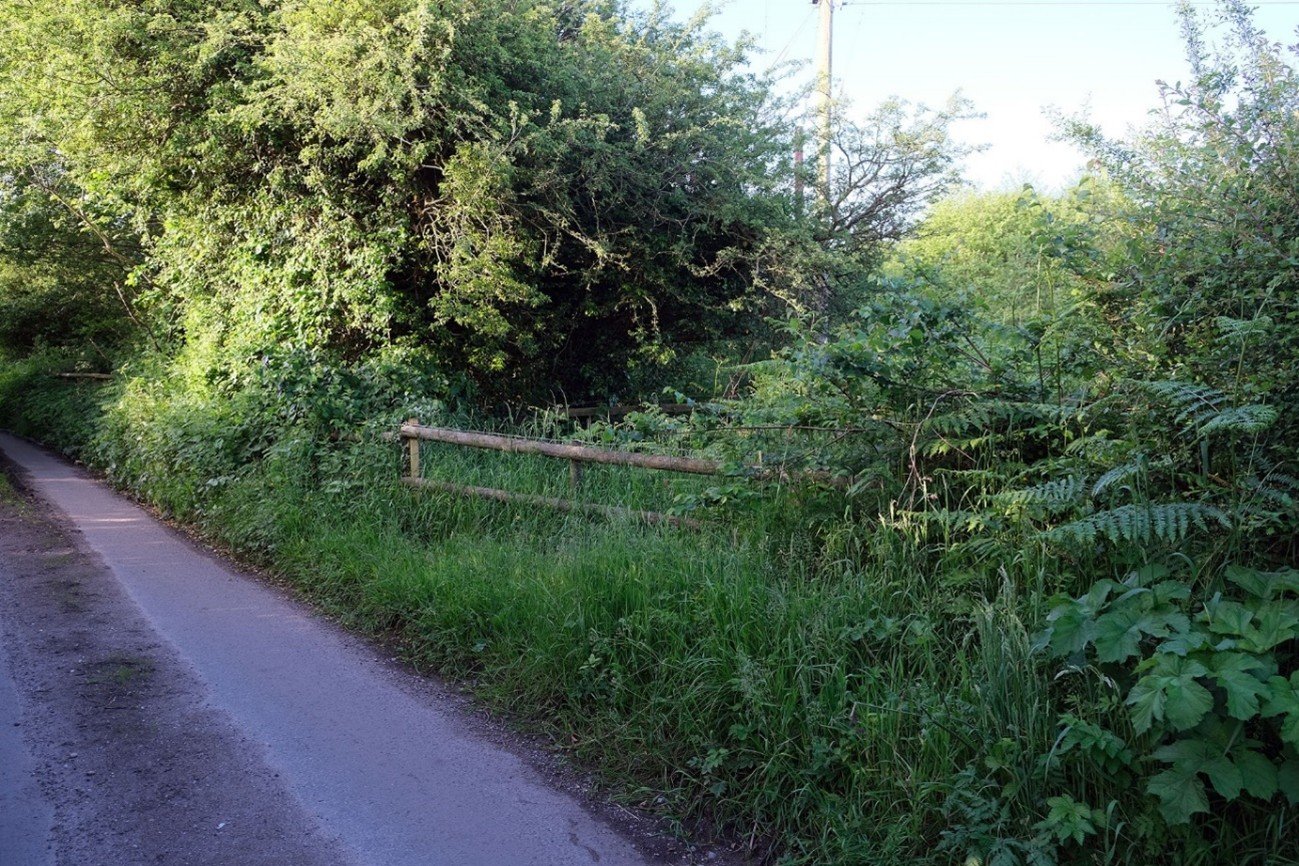











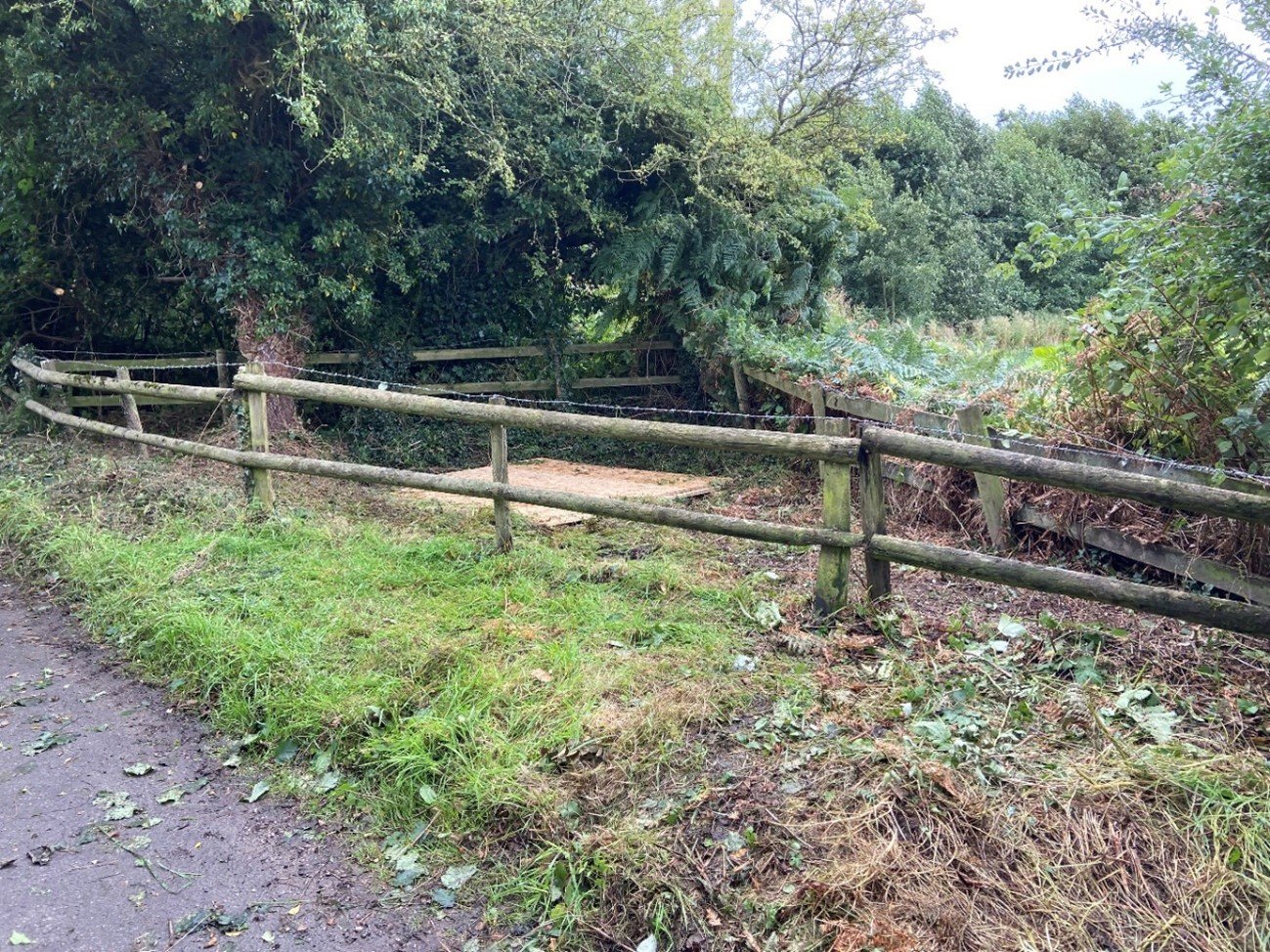


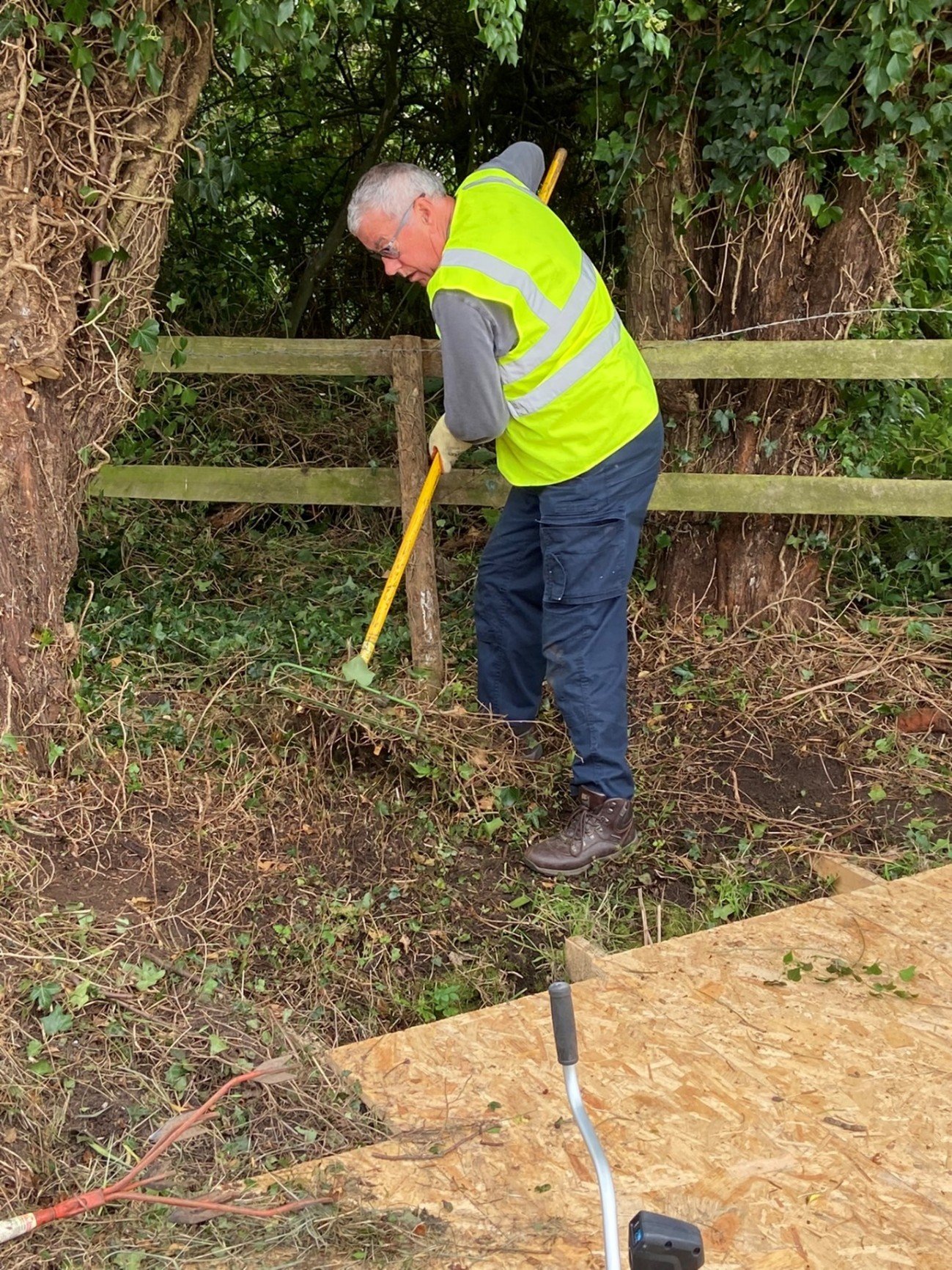






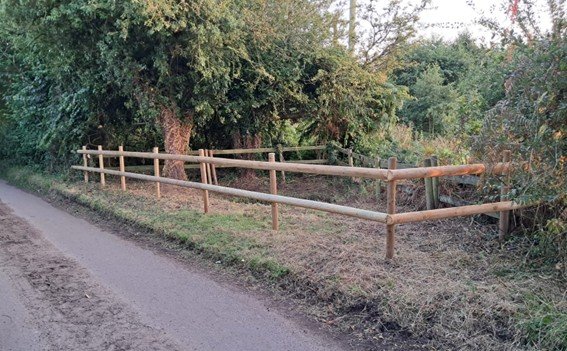
Alongside the ancient well are, from left: Mike Blackshaw, Codsall & Bilbrook History Society; Staffordshire county councillor Mark Sutton; Kathy Knight, Brewood Civic Society; David Burton-Pye, Codsall & Bilbrook History Society; landowner Charlie Giffard and Helen Heywood of the Kingswood Trust.
